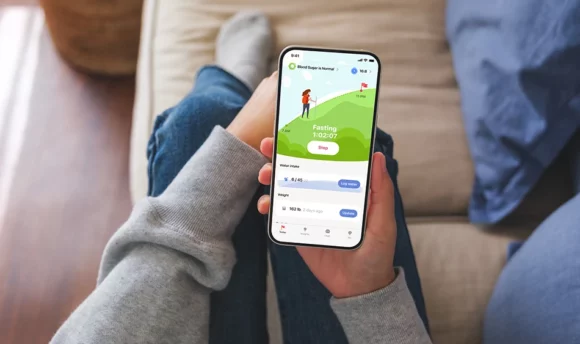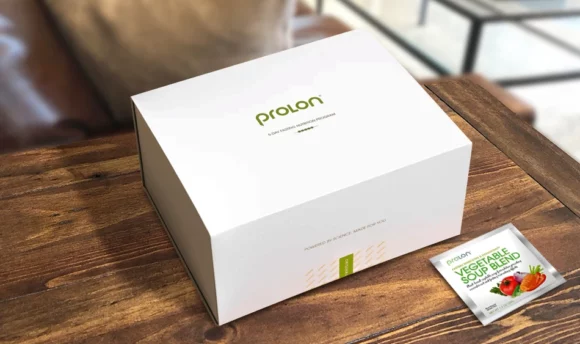What to Eat After Fasting for 24 Hours: The Best Options
If you want to get the most benefits out of fasting you have to know how to break your fast correctly. Read this article to find what foods are easy on the stomach.

Intermittent fasting has a variety of different methods and fasting periods. For the real hardcore intermittent fasters, an alternate-day fasting period starts with a 24-hour fast.
Our fasting experts weigh in on how to safely do a 24-hour fast and what you should eat after your fast ends.
What Should You Eat to Break A 24-hour Fast?
There are plenty of options to break your fast. Concentrate on fresh vegetables, fruit juices or smoothies. Doctors agree that it is best to start your feeding window with a liquid, so you can also eat bone broth or vegetable soup.
Nutrient-dense foods are the best as they are easy to digest, therefore you won’t feel bloated or nauseous. Try to avoid refined or sugary foods right after your 24-hour fast.
What to Eat After a 24-Hour Fast?
Let’s take a look at some of the best foods to eat after you break a fast. These foods will be easy on the stomach, as well as boost health benefits during your eating window.
#1 Start with a drink
Try not to jump straight in with solid foods. Start with a drink. It can be one of your favorite dissolvable supplements, coffee, tea, bone broth, or even just some flavored water.
Encourage your digestive enzymes to start working again. Apple cider vinegar, for example, has a lot of health benefits. Try diluted apple cider vinegar: 5 to 10 parts of water to 1 part of vinegar.
#2 Fruits and dried fruits
Fruits, whether dried or fresh, are an excellent method to reintroduce meals after an intermittent fast. The fruit has natural sugars that can help you feel more energized without adding too many processed carbs to your diet.
#3 Cruciferous vegetables
Start with some non-starchy vegetables. Raw vegetables are best, but you can also cook them if you’re not a fan of uncooked vegetables.
Tomatoes, cucumbers, and avocados are all great vegetables to start with when you’ve finished your prolonged fast. Cooked broccoli is also great.
#4 Lean protein
Once you’re ready to start adding protein back to your diet, you want to make sure you’re choosing lean sources of protein.
This can be anything from white fish to the white meat parts of chicken (without the skin!).
#5 Healthy fats
And finally, you can’t forget the healthy fat. Our bodies crave fats, and after a 24-hour fast, your body will likely be in a state of ketosis.
Avocado, grass-fed butter, and ghee butter are fat go-tos.
Food to Avoid After a 24-Hour Fast
Just as there are foods you want at the top of your list, there are also foods you want to make sure you avoid after breaking a fast.
#1 Eggs
Eggs are usually pretty good if you’re during your eating window or on a ketogenic diet. But eggs right after a fast can make you feel bloated.
They’re full of fat and protein, but you want to avoid breaking a fast with them.
#2 Dairy
Dairy products such as milk, ice cream, and yogurt can make people feel very uncomfortable directly after a fast.
Lactose is not particularly easy on the digestive tract, and many people struggle to digest dairy. It’s much harder after a long fast.
#3 Legumes
Beans and lentils are also good sources of protein, but you want to avoid these particular foods right after a fast.
Legumes like beans, peanuts, and lentils should be added slowly back to your diet, just not right away.
#4 Starchy cooked vegetables
Starch is hard on digestion, which you don’t want when you’ve just started eating again after a long break.
Avoid things like corn, potatoes, beets, squash, or even green peas when you’ve finished intermittent fasting.
How to Do a 24-Hour Fast?
Alternate-day fasting, or Eat Stop Eat, is a method of intermittent fasting that involves fasting for 24 hours.
This type of fasting isn’t for those who are just dipping their toes into the lifestyle. It takes a lot of commitment!
Before starting a 24-hour fast, make sure you’re eating a low-carb and high-fat diet. This will help push you into ketosis, which will help your body seek out fat for energy during your fast, rather than looking for carbohydrates.
You also want to stay hydrated. This is a very important part of fasting. If you’re not drinking enough water, you can cause all kinds of problems to your body.
How to Break a Fast?
Make sure you ease back in with a small meal full of nutrient-dense foods that are easy on your digestive system. Things like cooked vegetables, whole grains, and good fats are things to add to your list.
When it’s time to eat again after a 24-hour fast, it can be super tempting to have a big meal full of processed food. However, you should avoid high-carb meals once you go back to solid food.
Avoid high sugar foods, foods with a lot of starch, dairy products, and processed foods. These are not easy-to-digest foods, and they’ll have you feeling a little queasy after your first meal. Also, try to avoid raw cruciferous vegetables.
What Is Refeeding Syndrome?
Refeeding is a little-known but potentially fatal condition that affects people who have food introduced after malnutrition or starvation. It could also potentially happen after a period of fasting. It occurs with a sudden metabolic shift between fat metabolism and carb metabolism.
It affects the electrolytes that help you metabolize food. If you feel weakness, fatigue, confusion, or trouble breathing when you eat real food, see a medical professional right away.
A Word From Nutritionist
Intermittent fasting is great for weight loss, helping reduce your blood sugar, insulin sensitivity, heart disease, and a variety of other health reasons.
However, fasting for extended periods of time means that you have to be careful when you start eating again.
The best way to eat after breaking a fast is to eat slowly; start with water, bone broths, and other easy-to-digest foods. Avoid foods that will make it hard for your body to work through them.
Thorough research has been done on the beneficial effects of something like a 24-hour fast, but there’s still a slight chance of risk – exercise caution when you stop eating for any length of time.
Always talk with your doctor before going on a fast like this. It may not be the best way for weight loss if you’re in a high-risk group. Seek medical supervision right away if you experience abdominal pain or other symptoms of refeeding syndrome.
Conclusion
While there are risks that involve fasting, you can mitigate those risks by making sure you follow the foods listed in this article.
What to eat after fasting for 24 hours? Breaking a fast requires more than just eating your favorite meal. Leafy greens, fermented foods, fruits, and healthy fats are all the best foods to get you back on track when you’ve finished with your fast.

















































 Select your language:
Select your language: 








